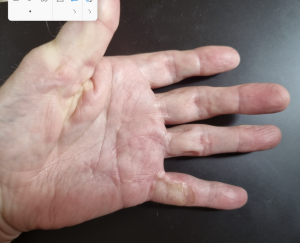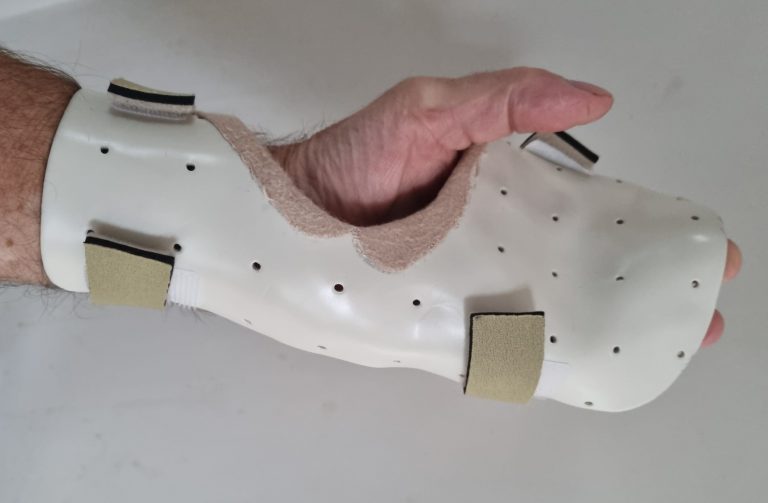My first meeting with the consultant began with a confirmation that I had fairly aggressive Dupuytren’s in both hands with evidence of Garrod’s pads too. Garrod’s pads are frequently associated with Dupuytren’s and thickened areas of skin that appear over the knuckles on the back of the fingers. They may also occur on the toes. Definitely something to look out for if you see evidence of other Dupuytren’s symptoms.
What do you know about the fascia?
The next question from the consultant was “What do you know about the fascia”. At the time I had to confess to not a lot. It has been a long time since I studied any anatomy! The fascia, in anatomy, refers to the thin layer of connective tissue that surrounds and separates muscles, organs, and other structures throughout the body. It provides support, protection, and aids in movement by reducing friction and maintaining structural integrity. Essentially, fascia is the body’s internal wrapping, holding everything in place and enabling proper function.
So, let’s think about the skin over most of your body. It’s quite loose and easy to move around and pull up. The palms (and soles of the feet) are very different. Gripping requires the skin of the palms to not slide around, one of those things we take for granted but never really think about. Accordingly, the palmar fascia is a bit different and includes fibres that attach it to the skin. In Dupuytren’s abnormal accumulation of some cell types (myofibroblasts) leads to the development of lumps (nodules) on the fascia, often these can be quite painful. As the condition develops, collagen fibres are produced by these nodules. Collagen fibres are the main component of our tendons but are being produced in the wrong place in Dupuytren’s. As the fibres develop the contract causing the fingers to bend over. If left untreated this can result in the fingers being permanently in the closed fist position with the little and ring fingers being the most frequently affected.
Surgical options
At the time of my first consultation, both my little fingers were heading towards a 90 degree bend with ring fingers not far behind. Worst affected was the little finger of my left hand. My first choice was to go with the left hand, which was fairly easy, as it was the most problematic at the time. The next choice was what treatment to go with.
Option 1 was needle fasciotomy. This involved inserting a needle under the skin to disrupt the nodules and break up the collagen fibres. I’d done a bit of research by this time and agreed with the consultant that this would be a poor choice. There would be some improvement but recurrence would be very likely.
Options 2 and 3 both involve fasciectomy in which an incision is made in the skin allowing nodules and excess fibres to be removed. Option 3 also includes the removal of the palmar skin from the base of the finger up to just above the first joint. This skin is then replaced by a graft taken from the arm. The aim is to use a hairless piece of skin usually found around the elbow. The consultant explained that grafting, known as a firebreak, reduces the chance of recurrence. I’ll discuss this in more detail in future posts, along with some other science stuff and treatment research.
So after a couple of weeks of deliberation and research, the decision was a simple fasciectomy on the ring finger and a fasciectomy with graft (dermo-fasciectomy) on the ring finger. The date was booked, based on first opportunity after a late skiing holiday in April!
Coming up next. My first surgery and subsequent recovery.




